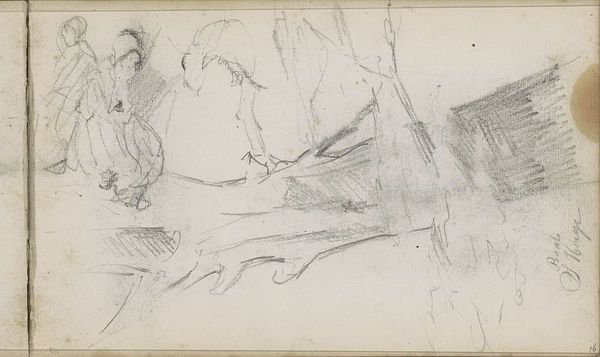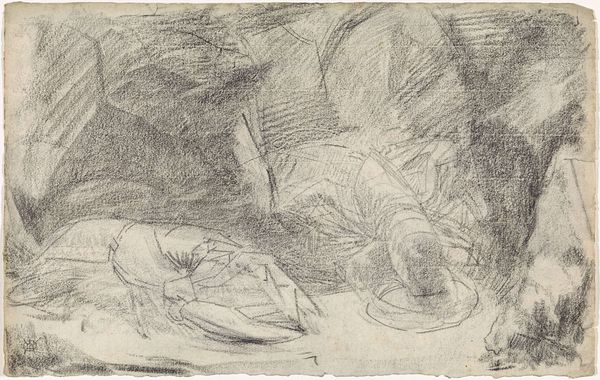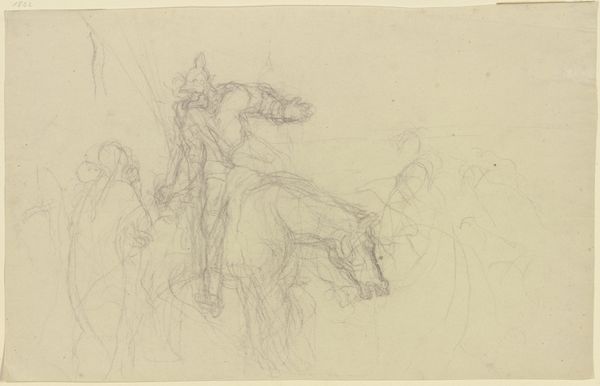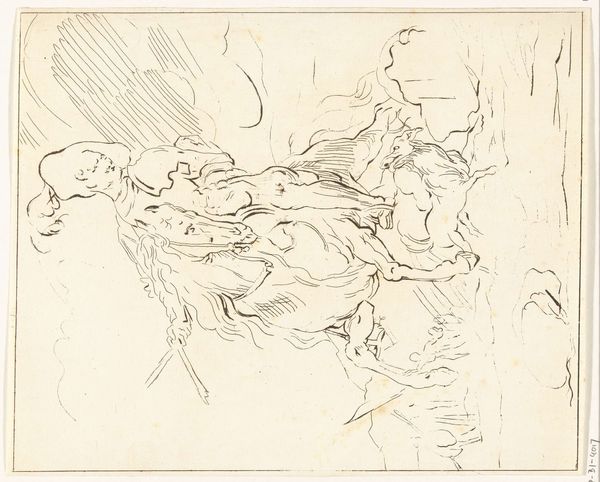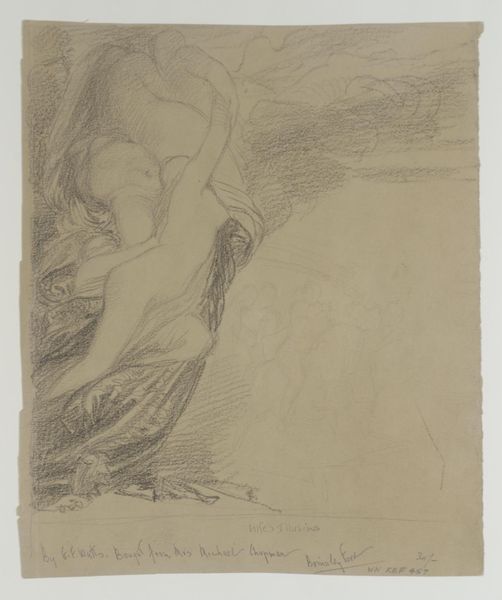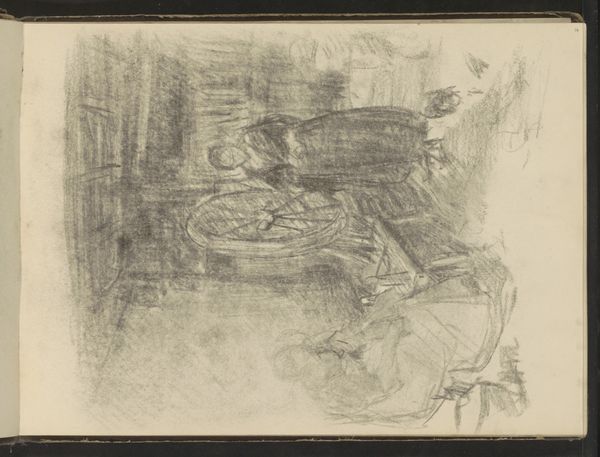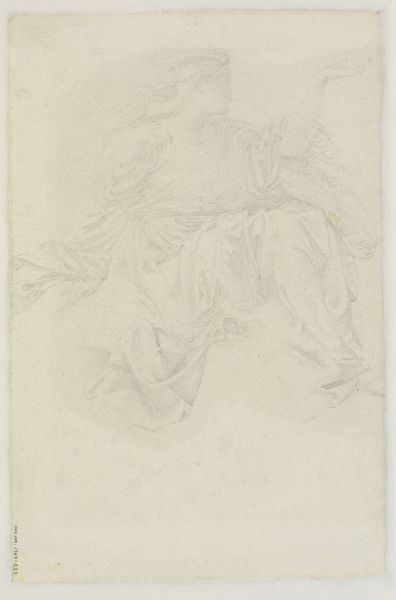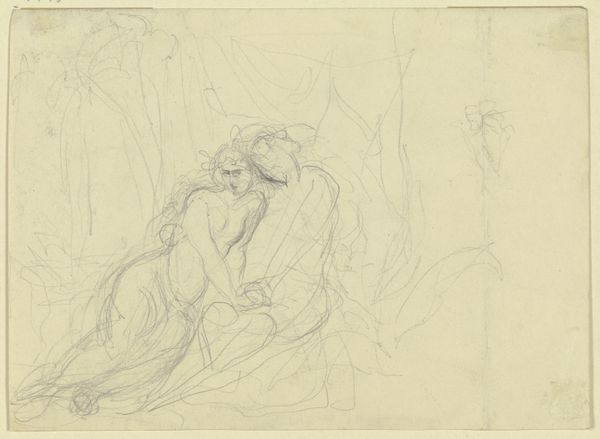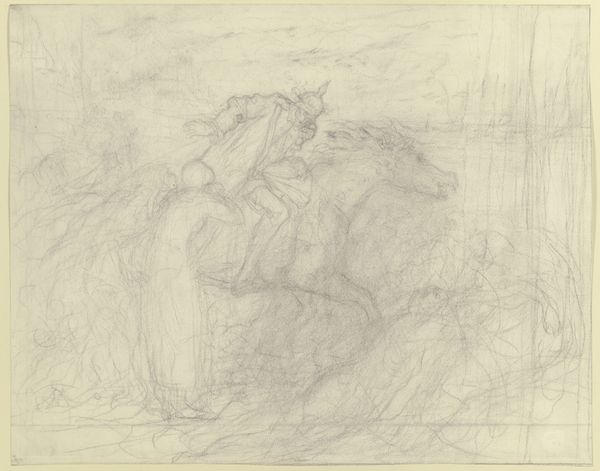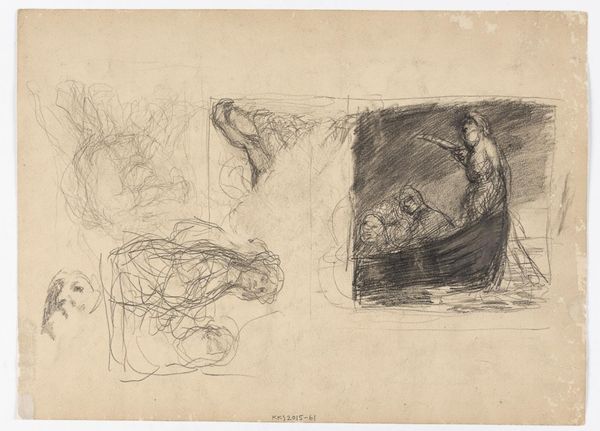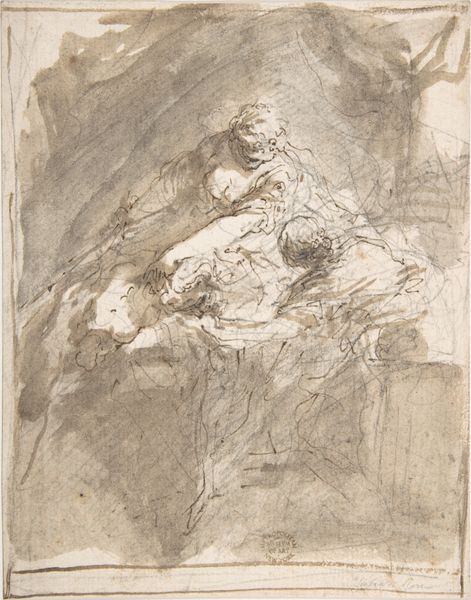
Copyright: Public Domain
Curator: Victor Müller created this pencil drawing, "Laertes und die wahnsinnige Ophelia," around 1869. Editor: A visceral grief emanates from this drawing; it has an energy that both haunts and compels me. The scratchy marks form a stark image that powerfully conveys trauma and tragedy. Curator: The source material, of course, is Shakespeare's Hamlet, Act IV. We see Ophelia in her madness and Laertes overwhelmed by grief—key components of the visual imagery used in Romanticism. What visual symbols resonate most with you here? Editor: For me, Ophelia’s semi-transparent figure emphasizes the tragic arc of women whose mental breakdown can be attributed to male influence in their lives. She is a spectral form of her former self, no longer in control of her mind and body. Her image speaks to both fragility and the strength necessary to face the unimaginable. And the way Laertes crumples in the bottom corner also feels resonant—it seems that he is bearing the unbearable. Curator: The symbolism here builds on earlier Romantic depictions, like Delacroix’s paintings inspired by Shakespeare. The figure of Ophelia became its own iconic representation of rejected love and feminine vulnerability. I find her gestures significant, the way she stretches upward as though beckoning. But beyond that are the marks—repeated strokes, layers of shade. Editor: Exactly, this technique renders the composition with striking immediacy, the rough lines underscoring the raw emotion of the scene. This depiction humanizes Laertes and Ophelia. Instead of the familiar aestheticization of their pain, the composition draws a connection to the contemporary struggle of dealing with mental illness and its ramifications in a society still unwilling to take responsibility. Curator: It's as though Müller wants to show us the unvarnished emotional truth—a turn away from academic ideals. His emphasis on conveying profound feeling gives a powerful intimacy despite the source being one of history's greatest tragedies. Editor: It is so. What I initially saw as an image of the past instead urges me to connect its themes with our shared humanity. Perhaps by understanding this tragic, romantic portrayal, we are able to address parallel situations unfolding in our present.
Comments
No comments
Be the first to comment and join the conversation on the ultimate creative platform.

